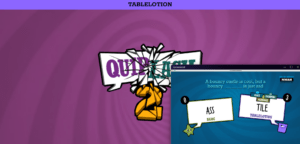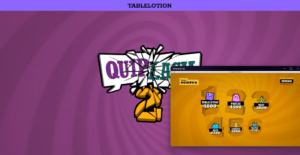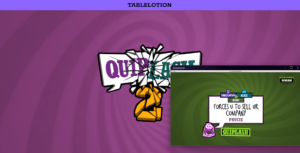Quiplash XL is one of the many games a part of the Jackbox Party Pack 2, a collection of games made for friends and family of varying ages. Developed and published by Jackbox Games on Steam, the premise of Quiplash XL is similar to Cards Against Humanity in that you are filling in a prompt to generate as much humor as possible. The main difference is that the responses are completely free-form. This can be a double-edged sword, though. The game draws on expression, wit, and fellowship to appeal to greater audience of those around you. You can easily miss the mark on what constitutes funny versus not-funny. The prompts can make this more difficult as well (seen below).

What makes judging unique in Quiplash XL? What’s its purpose? How do players interact with this system? These are vital questions in order to investigate the success of the game overall within the party pack.
To begin, judging in Quiplash XL takes the form of an initially anonymous system where you choose between choices individually like below. There are no rules to discussion, so player dynamics often involve persuasion, explanation, or extension of answers. These techniques and strategies are enacted (usually subtly) in order to try to gain votes.

Votes are vital because they are a core mechanic in the game. More votes equals more points. Points are the deciding factor as to who wins and loses in the game.

Moreover, points add new dynamics with the addition of a leaderboard recap at the end of each round. It shifts lots of interactions to be more competitive. Many players are fighting for first. Many are also fighting to not be last! More banter and interactions between players can serve as a way to heighten comedic effect as well as loosen the atmosphere.
From this, we can gather that the purpose of voting is to build bonds between players (even if they are at odds) and to progress the game. This works as each player needs every other player’s collective effort and enjoyment to win. The game helps build these dynamics by adding special effects and granting more points for uniform voting (seen below).

From this we can see that players interact in numerous ways that each support building bonds with one another. Players may:
- Write answers related to other players
- Try to persuade players to pick their answer
- Vote for other players
- Chat with other players while writing answers
- Chat with other players while voting
- Interact based on the leaderboard
The game lends itself to social interaction by keeping the core mechanics simple and forcing interaction on behalf of all of the players at least in the sense of voting. The various dynamics arise for different groups in different ways, but eventually happens due to the point and leaderboard mechanics added for competitiveness. Since the game takes a light-hearted, comedic approach, the outcomes are similarly positive on the behalf of the player and is what makes it a great game for a party.


